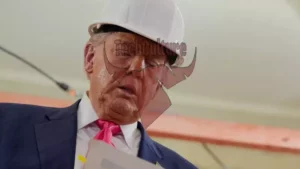The GOP turnout for the Iowa Caucus this year has raised eyebrows, as it reached its lowest point in 24 years. The combination of a blistering winter storm and the overwhelming dominance of former President Donald Trump in the race contributed to this historic low. With turnout numbers comparable to those of 1988 when then-Vice President George HW Bush was vying for the nomination, it is evident that the circumstances surrounding this year’s caucus played a significant role in the lackluster participation.
The impact of the winter storm cannot be underestimated. Severe weather conditions can discourage even the most dedicated voters from making the journey to their local caucus sites. With heavy snowfall and treacherous road conditions, it is understandable that many potential caucus-goers opted to stay home instead. This external factor undoubtedly contributed to the diminished turnout, as Iowans prioritized their safety and well-being over political participation.
Furthermore, the overwhelming dominance of Donald Trump in the Republican Party played a pivotal role in the lackluster turnout. Trump’s influence and popularity among Republican voters cannot be understated. His continued presence in the political arena and the expectation of his potential candidacy in the 2024 election may have discouraged some Republicans from actively participating in this year’s caucus. With Trump’s shadow looming large over the party, some potential voters may have felt that their presence at the caucus would make little difference in the face of his overwhelming support.
The historically low GOP turnout in the Iowa Caucus this year can be attributed to a combination of factors. The blistering winter storm and Trump’s dominance in the race both played significant roles in dissuading potential voters from participating. As the political landscape continues to evolve, it will be interesting to see how these factors shape future caucus turnouts and the overall engagement of voters in the electoral process.





